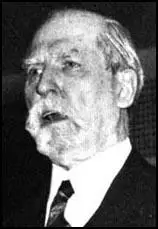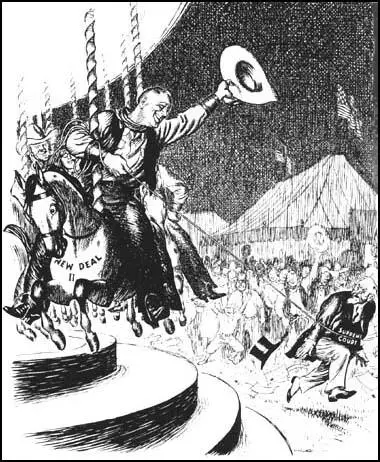Charles Evans Hughes

Charles Evans Hughes was born in Glens Falls, New York on 11th April, 1862. After graduating from Brown University (1881) and Columbia University (1884) he was admitted to the bar and practiced in New York City. A member of the Republican Party, Hughes was elected governor of New York in 1907.
In 1910 President William Taft appointed Hughes as a member of the Supreme Court. However he resigned in 1916 when he became the Republican Party candidate for the presidency. In the election he received 8,538,221 votes but was beaten by the Democratic Party candidate, Woodrow Wilson (9,129,606).
When the Republican Party regained power Hughes served as Secretary of State under Warren Harding (1921-1923) and Calvin Coolidge (1923-1929). He was also a judge at the Permanent Court of International Justice (1928-1930). and wrote The Supreme Court of the United States (1928).
In 1930 President Herbert Hoover appointed Hughes as chief justice of the Supreme Court. After Franklin D. Roosevelt, the Democratic Party candidate, was elected as president in 1932, Hughes was seen as the leader of the court's opposition to some of the proposed New Deal legislation. This included the ruling against the National Recovery Administration (NRA), the Agricultural Adjustment Act (AAA) and ten other New Deal laws.
On 2nd February, 1937, Franklin D. Roosevelt made a speech attacking the Supreme Court for its actions over New Deal legislation. He pointed out that seven of the nine judges (Hughes, Willis Van Devanter, George Sutherland, Harlan Stone, Owen Roberts, Benjamin Cardozo and Pierce Butler) had been appointed by Republican presidents. Roosevelt had just won re-election by 10,000,000 votes and resented the fact that the justices could veto legislation that clearly had the support of the vast majority of the public.
Roosevelt suggested that the age was a major problem as six of the judges were over 70 (Hughes, Willis Van Devanter, James McReynolds, Louis Brandeis, George Sutherland and Pierce Butler). Roosevelt announced that he was going to ask Congress to pass a bill enabling the president to expand the Supreme Court by adding one new judge, up to a maximum off six, for every current judge over the age of 70.
Hughes realised that Roosevelt's Court Reorganization Bill would result in the Supreme Court coming under the control of the Democratic Party. His first move was to arrange for a letter written by him to be published by Burton K. Wheeler, chairman of the Judiciary Committee. In the letter Hughes cogently refuted all the claims made by Franklin D. Roosevelt.
However, behind the scenes Hughes was busy doing deals to make sure that Roosevelt's bill would be defeated in Congress. On 29th March, Owen Roberts announced that he had changed his mind about voting against minimum wage legislation. Hughes also reversed his opinion on the Social Security Act and the National Labour Relations Act (NLRA) and by a 5-4 vote they were now declared to be constitutional.

Then Willis Van Devanter, probably the most conservative of the justices, announced his intention to resign. He was replaced by Hugo Black, a member of the Democratic Party and a strong supporter of the New Deal. In July, 1937, Congress defeated the Court Reorganization Bill by 70-20. However, Roosevelt had the satisfaction of knowing he had a Supreme Court that was now less likely to block his legislation.
Hughes, who retired from the Supreme Court in 1941, published several books including Foreign Relations (1924), The Pathway of Peace (1925), The Supreme Court of the United States (1928) and Pan-American Peace Plans (1929).
Charles Evans Hughes died in Osterville, Massachusetts, on 27th August, 1948.
